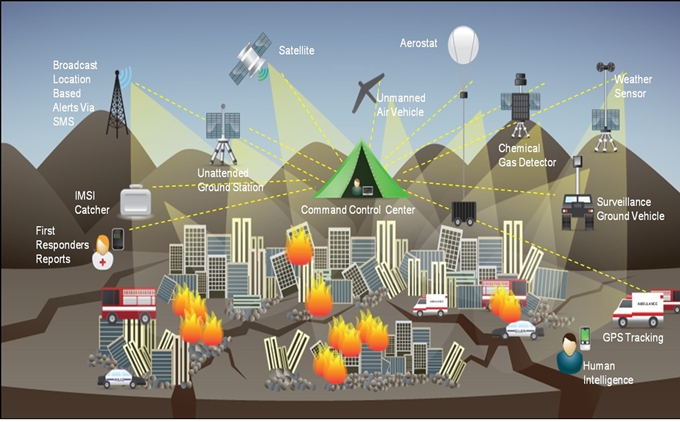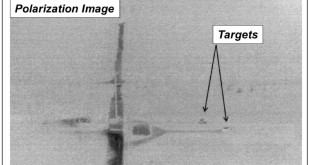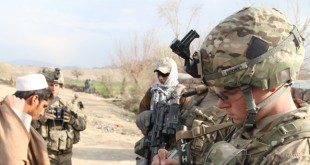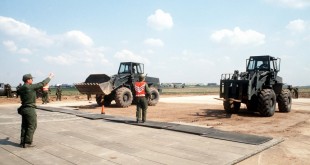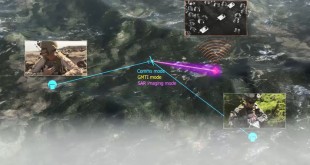Today U.S. soldiers are being killed because the Defense Department cannot deploy all the sensors it would like to. DoD could deploy sensors every few yards to detect buried improvised explosive device (IED). As it is, every sensor deployed today has to be battery powered, so even if vast sensor nets …
Read More »Yearly Archives: 2017
New polarizer technologies can aid in detecting military targets from high altitude air and space platforms
Many types of sensors have been proposed for detection of small targets such as tanks and trucks including passive infrared imaging sensors and active Radars. Passive sensing systems, for many types of targets, especially airborne ones, use target motion as a cue for the target detection. However, for stationary small …
Read More »Under High-profile global cyber attacks, Global Cybersecurity Index 2017 measures the commitment of the ITU Member States to cybersecurity
Singapore has topped a global cyber security index released by the United Nations, followed by other UN member states such as the United States, Malaysia, Oman, Estonia, Mauritius, Australia, Georgia, France and Canada, the other top 10 countries. The Index has been released by the UN telecommunications agency International Telecommunication …
Read More »DARPA’s Fast Lightweight Autonomy (FLA) program is advancing autonomy to aid military operations in dense urban areas or heavily wooded forests
“The goal of Fast Lightweight Autonomy (FLA) is to develop advanced algorithms to allow unmanned air or ground vehicles to operate without the guidance of a human tele-operator, GPS, or any datalinks going to or coming from the vehicle,” said JC Ledé, the DARPA FLA program manager. Autonomous flight capabilities …
Read More »DARPA TNT through activation of peripheral nerves speeds up learning by 40% , enable soldiers analyzing intelligence and cryptography techniques
In March 2016, DARPA launched the Targeted Neuroplasticity Training (TNT) program, that seeks to advance the pace and effectiveness of a specific kind of learning—cognitive skills training—through the precise activation of peripheral nerves that can in turn promote and strengthen neuronal connections in the brain. TNT will pursue development of …
Read More »Media a critical element of National Security and a Force Multiplier for Military
In this new age of information revolution, Media has become an important pillar of national Power, with power to influence public opinion. Media shapes the perception of decision-makers and people. In addition, based on these perceptions the political decision-makers formulate policies, choose lines of actions. Abraham Lincoln, the 16th President …
Read More »DARPA developing long range precision guided Munitions for defeating threats in Urban Warfare
Cities have become the new battleground and Hybrid or Urban Warfare the greatest threat being waged by ISIS to Boko Haram to Hamas to Ukraine rebels. Fight against Islamic State of Iraq and Greater Syria is being waged as Urban warfare. Boko Haram is carrying out its urban terror campaign …
Read More »DARPA creating a Secure, Private Internet and Cloud for Warfighters at the tactical edge to quickly share current intelligence information and imagery on their mobile devices
Warfighters at the tactical edge are generally required to communicate with base facilities in order to report and retrieve new information about their locations, missions, and potential threats. With current communications technology, this critical operational content is not always immediately accessible nor distributable for warfighters who are outside of the …
Read More »USAF Rapid Airfield Damage Repair (RADR) program to counter threat of long range and accurate ballistic and cruise missiles
In the past 100 years, attacking forces have used a diverse array of weapons to target airfields, including aircraft, missiles, naval guns, artillery, mortars, rockets, satchel charges, and small arms Attacker objectives have also been diverse, including destruction of aircraft and equipment, inflicting casualties, denial of use, capture of the …
Read More »DARPA drones shall carry mission adaptable payloads to switch missions mid flight from intelligence, command and control, networking to combat operations
UAS are used as force multipliers. They provide real-time Intelligence, Surveillance and Reconnaissance (ISR) information on remote targets and areas, as well as damage assessment and electronic warfare. They are also commonly used in border control as well as anti-terror operations. Today, unmanned aerial systems (UAS) typically require multiple payloads with dedicated components, …
Read More » International Defense Security & Technology Your trusted Source for News, Research and Analysis
International Defense Security & Technology Your trusted Source for News, Research and Analysis
